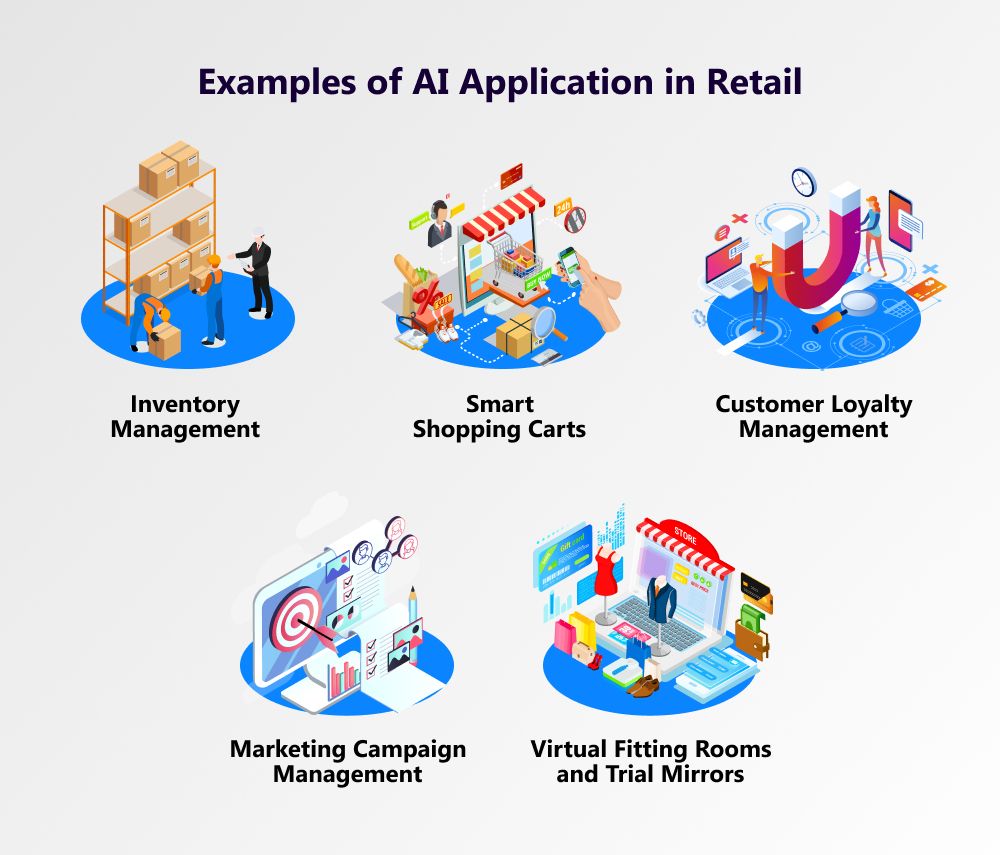The Latest Technology Findings in the World: Digital Immune System

Introduction
Imagine a world where our technological infrastructure has its own immune system. A system that can detect and neutralize threats, just like our biological immune system fends off diseases. Welcome to the fascinating realm of the digital immune system. In this blog post, we will delve into the latest technology findings in the world and explore the concept of the digital immune system – a revolutionary approach that safeguards our technological future. By understanding what the digital immune system is and how it functions, we can harness its power to protect against ever-evolving cyber threats. So, let's dive into the world of the digital immune system and discover its significance in today's interconnected society.
What is the Digital Immune System?
The digital immune system is a comprehensive security framework designed to proactively detect, respond to, and mitigate cyber threats across networks, systems, and applications. Inspired by the biological immune system, it aims to provide a proactive defense mechanism to counteract sophisticated cyber attacks. The digital immune system combines advanced technologies such as artificial intelligence, machine learning, and big data analytics to identify anomalies and potential threats, enabling organizations to respond swiftly and effectively.
How Does the Digital Immune System Work?
At its core, the digital immune system relies on advanced algorithms and intelligent automation to monitor and analyze vast amounts of data. It employs machine learning algorithms to detect behavioral patterns and anomalies across various network endpoints. By continuously learning and adapting to new threats, the digital immune system can autonomously detect and respond to potential cyber-attacks, minimizing response times and reducing manual efforts.
The digital immune system utilizes algorithms and models trained on large datasets to identify cyber threats, such as malware, phishing attempts, and unauthorized access attempts. It continuously compares observed activities against established baselines and indicators of compromise, enabling it to identify deviations from normal behavior. This proactive approach helps organizations identify and mitigate security risks before they escalate, reducing the potential impact of cyber threats.
Benefits of Implementing a Digital Immune System
Implementing a digital immune system offers several benefits to organizations:
1. Early Threat Detection: By leveraging advanced algorithms and analytical models, the digital immune system can identify emerging threats and potential vulnerabilities early on, providing organizations with more time to respond and mitigate risks effectively.
2. Reduced Response Times: The digital immune system's autonomous threat detection and response capabilities enable organizations to respond rapidly to cyber threats, minimizing potential damages and downtime.
3. Enhanced Predictive Capabilities: Machine learning algorithms employed by the digital immune system can predict the behavior of known and unknown threats, helping organizations proactively strengthen their security posture.
4. Integrated Security Infrastructure: The digital immune system integrates seamlessly with existing security infrastructure, augmenting the capabilities of traditional security measures and providing a holistic view of an organization's security landscape.
5. Cost-Effective: By automating threat detection and response processes, organizations can achieve a higher level of efficiency and reduce operational costs associated with manual security monitoring.
Case Studies: Real-World Applications of the Digital Immune System
Case Study 1: Financial Services Industry
In the highly regulated and constantly evolving landscape of the financial services industry, organizations face numerous cyber threats. Implementing a digital immune system can help financial institutions detect and respond to advanced threats such as ransomware attacks, phishing attempts, and insider threats. By leveraging the power of intelligent automation and real-time threat intelligence, financial organizations can stay ahead of cybercriminals and protect sensitive customer data.
Case Study 2: Healthcare Sector
The healthcare sector is a prime target for cybercriminals due to the vast amount of sensitive patient information and critical systems involved. A digital immune system can bolster the security infrastructure of healthcare organizations by continuously monitoring medical devices, securing patient records, and preventing potential breaches. By proactively detecting and mitigating emerging threats, healthcare providers can ensure the confidentiality, integrity, and availability of patient data.
Key Components of an Effective Digital Immune System
To build a robust digital immune system, organizations need to consider implementing the following key components:
1. Intrusion Detection Systems
Intrusion Detection Systems (IDS) form the foundation of the digital immune system. They monitor network traffic, identify potentially malicious activities, and generate alerts when suspicious behavior is detected. There are two types of IDS, namely network-based and host-based. Network-based IDS examines network packets, while host-based IDS analyzes activities on individual systems, providing organizations with a comprehensive view of potential threats.
2. Security Information and Event Management
Security Information and Event Management (SIEM) platforms collect, analyze, and correlate security event data from various sources. SIEM systems ingest logs from network devices, servers, and applications, aiding in the detection and response to security incidents. By centralizing security event data, SIEM enables organizations to gain real-time visibility into their security posture and identify anomalies or malicious activities more effectively.
3. Threat Intelligence
Threat Intelligence refers to the collection, analysis, and dissemination of data related to potential and existing cyber threats. By leveraging threat intelligence feeds, organizations can proactively identify and mitigate risk, augmenting their digital immune system's threat detection capabilities.
4. Incident Response
Incident Response involves a predefined set of processes and procedures to handle and mitigate the impact of security incidents. An effective incident response plan enables organizations to respond promptly to cyber threats, minimize potential damages, and swiftly recover normal operations.
Best Practices for Building a Robust Digital Immune System
To ensure the effectiveness of a digital immune system, organizations should adopt the following best practices:
1. Regular Updates and Patch Management
Keeping software, operating systems, and network devices up to date with the latest security patches is crucial for minimizing vulnerabilities. Regular updates and patch management help protect against known threats and ensure organizations are equipped to address emerging risks.
2. Employee Awareness and Training
Human error remains one of the leading causes of security breaches. Conducting regular employee awareness and training programs on cybersecurity best practices can significantly enhance an organization's security posture. Educating employees on topics such as identifying phishing attempts, creating strong passwords, and reporting suspicious activities fosters a culture of security awareness.
3. Secure Network Configuration
Configuring networks securely, including implementing strong firewall rules, segregating network segments, and conducting regular security audits, can prevent unauthorized access and strengthen an organization's overall security posture.
4. Data Encryption and Access Control
Encrypting sensitive data at rest and in transit adds an extra layer of security, making it harder for cybercriminals to gain unauthorized access. Implementing robust access controls and user management protocols, such as multi-factor authentication, helps ensure that only authorized personnel can access sensitive information.
Challenges and Limitations of the Digital Immune System
While the digital immune system offers significant advantages, organizations must be aware of the following challenges and limitations:
1. Evolving Threat Landscape
The threat of cyber attacks is constantly changing, and attackers are using more advanced methods. To ensure the digital immune system remains effective, organizations must stay updated on emerging threats and invest in regularly updating their security measures.
2. Lack of Standardization
The absence of standardized frameworks and protocols can hinder interoperability between different components of the digital immune system. Organizations may face challenges integrating different security solutions, potentially impacting the overall effectiveness of the system.
3. Resource Intensiveness
Implementing and maintaining a digital immune system can be resource-intensive in terms of investment and expertise. Organizations need to allocate sufficient resources to ensure the system's effectiveness and stay up to date with evolving technologies.
The Future of the Digital Immune System
As technology continues to advance and cyber threats become more sophisticated, the digital immune system will play a vital role in safeguarding our digital infrastructure. Advancements in artificial intelligence, machine learning, and automation will further enhance the capabilities of the digital immune system, enabling organizations to detect, respond to, and mitigate emerging cyber threats with greater efficiency and accuracy. The future holds immense possibilities for the digital immune system, empowering organizations to stay one step ahead of cybercriminals and ensure a secure technological future for all.
Conclusion
In today's interconnected world, ensuring the security of our technological infrastructure is of paramount importance. The digital immune system provides a proactive defense mechanism against cyber threats, inspired by the biological immune system. By combining advanced technologies such as artificial intelligence and machine learning, the digital immune system enables organizations to detect, respond to, and mitigate emerging threats effectively.
Implementing a digital immune system offers numerous benefits, including early threat detection, reduced response times, and enhanced predictive capabilities. Organizations in various sectors, such as finance and healthcare, can leverage the power of the digital immune system to protect their sensitive data and critical systems.
To build a robust digital immune system, key components such as intrusion detection systems, security information and event management, threat intelligence, and incident response must be carefully integrated. Following best practices, including regular updates and patch management, employee awareness and training, secure network configuration, and data encryption, enhances the effectiveness of the digital immune system.
However, organizations must remain aware of the evolving threat landscape, the lack of standardization, and the resource intensiveness of implementing a digital immune system. By addressing these challenges and staying updated on emerging technologies and threats, organizations can ensure the continued effectiveness of their digital immune system.
As technology advances, the digital immune system will evolve to adapt to new threats. With advancements in artificial intelligence, machine learning, and automation, the digital immune system's capabilities will continue to grow, empowering organizations to safeguard our technological future.
In conclusion, the digital immune system holds immense promise in protecting against technological threats, ensuring the security and resilience of our interconnected world. By embracing this innovative approach, organizations can secure their digital assets and foster a safe online environment for all.
Also Read...




